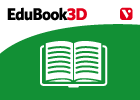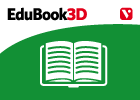Cargando...
Recursos educativos
-
Nivel educativo
-
Competencias
-
Tipología
-
Idioma
-
Tipo de medio
-
Tipo de actividad
-
Destinatarios
-
Tipo de audiencia
-
Creador
Lo más buscado
- Divisiones para imprimir
- Plantillas de letras para niños
- Guía del mundo
- Cultura y lenguas clásicas
- Actividades día de la paz
- Experimentos para estudiantes
- Mapa de Europa
- juegos ortografía
- Actividades de repaso
- Lecturas con valores
- La Catedral de Santiago
- Caligrafía para imprimir
- Anfibios ovíparos
- fichas inglés
- Ejercicios griego
-

Activities - Animals
EduBook Organización
- 4762 visitas
There are millions of different animals in the world. Animals are living things. They reproduce and eat. But different animals reproduce in different ways, and eat different foods. Animals also live in…
-

Look at this picture. Answer the questions
EduBook Organización
- 4670 visitas
Look at this picture. Answer the questions: Which period of history does the picture show? What are the peasants doing? Are they using tools? What animal are they using? What clothes are the peasants…
-

The Greek world: the poleis
EduBook Organización
- 4581 visitas
1.1. One civilisation Ancient Greeks worked in agriculture (olives, vineyards and wheat), livestock farming (goats and sheep) and fishing. They traded throughout the Mediterranean. Greece was…
-

Introduction - Animals
EduBook Organización
- 4565 visitas
There are millions of different animals in the world. Animals are living things. They reproduce and eat. But different animals reproduce in different ways, and eat different foods. Animals also live in…
-

Choose your own adventure story
Tiching explorer Organización
- 1 lo usan
- 7842 visitas
The aim of this lesson is that students work in collaborative pairs to create a "Choose your own adventure story" about a leprechaun. They create a Google Docs Presentation. Students complete…
-

Summaries - The Animal Kingdom (I). Invertebrates
EduBook Organización
- 4260 visitas
1. The simplest invertebrates The most common invertebrates are sponges, cnidarians, flatworms, nematodes, annelids, molluscs, echinoderms and arthropods. Sponges are aquatic animals. They act as…
-

The population and work
EduBook Organización
- 4265 visitas
3.1. The active population To analyse the development of a country, we need to know what portion of the population works. We also need to know which sectors they work in and the conditions they work in.…
-

Pre-Roman times: the Celts
EduBook Organización
- 4219 visitas
The Celts were a tribe from central Europe. They migrated to the northern and central part of the Iberian Peninsula in about 1000 BC. The Celts lived in circular walled villages called forts. They built…
-

Remember - Animals
EduBook Organización
- 3858 visitas
There are millions of different animals in the world. Animals are living things. They reproduce and eat. But different animals reproduce in different ways, and eat different foods. Animals also live in…
-

Check. The transport of substances in plants
EduBook Organización
- 3851 visitas
Remember what you have studied in this section and answer the questions: Talk to a classmate about sap: Draw a diagram to show the plant parts and system involved in transporting water from the soil up…
Te estamos redirigiendo a la ficha del libro...













